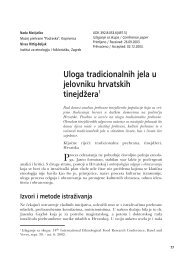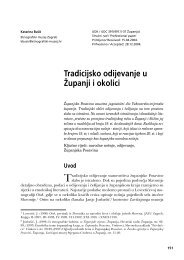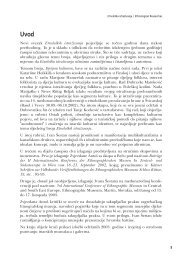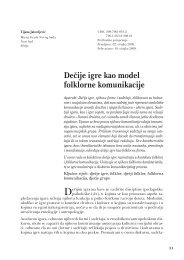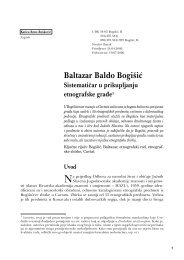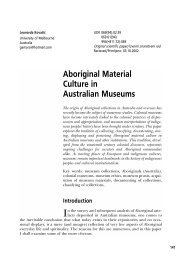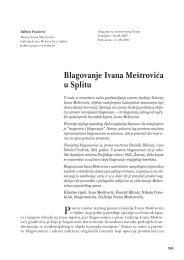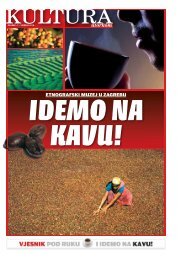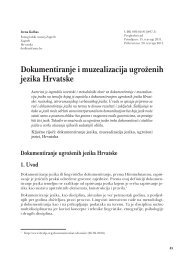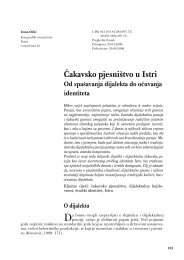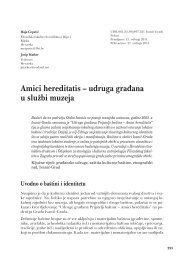Etnoloska istrazivanja / Ethnological researches - EMZ
Etnoloska istrazivanja / Ethnological researches - EMZ
Etnoloska istrazivanja / Ethnological researches - EMZ
Create successful ePaper yourself
Turn your PDF publications into a flip-book with our unique Google optimized e-Paper software.
Etnološka istraživanja 15/<strong>Ethnological</strong> Researches 15be disrupted, that is taken away. In later usage expressions such as poruha, porušica,porušna odića, porušiti se, to be porušen and similar ones relate to wearing mourningclothes. the overall dress of the dceased is not porušeno, in the testament dating from1643 she dress herself (“opravi se”) (Anzulović 1999:121). The Zadar writer who filledin the questionnaire pertaining to common law writes that “clothing was called ruhowhile ‘prćija’ designated the other features of moveable property” (Bogišić 1874: 213).Through words such as “nošnja” or zadruga Vuk Karadžić became the normativestandard who unified and replaced not only local terminology but modified theirsemantic fields. In addition, the word “nošnja” indicates the geographical directionfrom which the concept “folk costume” was taken. According to its root derivation,the word “nošnja” is not worn like a suit nor does it habituate as “costumi” or “habiti”from the earlier Venetian publications by Fortis and Lovrić but is “carried” as “Tracht”.Therefore, Karadžić’s standardization derives from two sources. Semanticallyit arrived from the north, while it was geographically conditioned from the west.The categorical moment of the formation of the folk costume was this conceptual refashioningof the Ravni kotari rušna from the ornate ruho (dress) of the marriageablegirl (with a necklace 17 and coins on the lower edge of the girl’s cap 18 ) into the pastoralshow-window of the transmitted “Nacionalizmus”, that is into that which ethnologistsand their predecessors after Karadžić will learnedly call solemn, holiday costume.In time, through scene performances, through being incorporated in festivities,being placed on bank notes and postal stamps this costume will enter all doorsand eventually return to the village home.Implications of the regional modelWhen Karadžić, as part of his national program, chose Ravni kotari as the settingfor introducing his “Serbian maiden” into what will after him come to be known ascostume (“nošnja”), this combination received its other potent part. In the NorthDalmatian area from Ravni Kotari across Bukovica and Zagora to Vrlika and Sinj,including the contact zone with the littoral, the folk way of dressing during the lasttwo millennia was decisively shaped by the social organization alongside state borders.Before the Military Border of the Hapsburg monarchy, this was a specially sequesteredand regulated region of Venetian territorial aspirations not only on thecontinental boundary facing the Turks but also in the area securing safe navigation.Within the historical areas of the Old Venetian possessions, the players of the game“moreška” in Kumpanjija were accounted for as folklore recollections of the reviews17In the Ravni kotari village of Lišani such a necklace with gold and silver cpoins worn in three rows aroundthe neck was called obradica while a necklace with crowned thalers in ravi kotari was also known asžutci. To the south in Zagora a necklace with cvancika was known as vinac.18Pierced coins sewn along the lower edge of the girl’s cap as part of dressing the maid throughout theRavni kotari area are known as cvancike or thalrs.212



